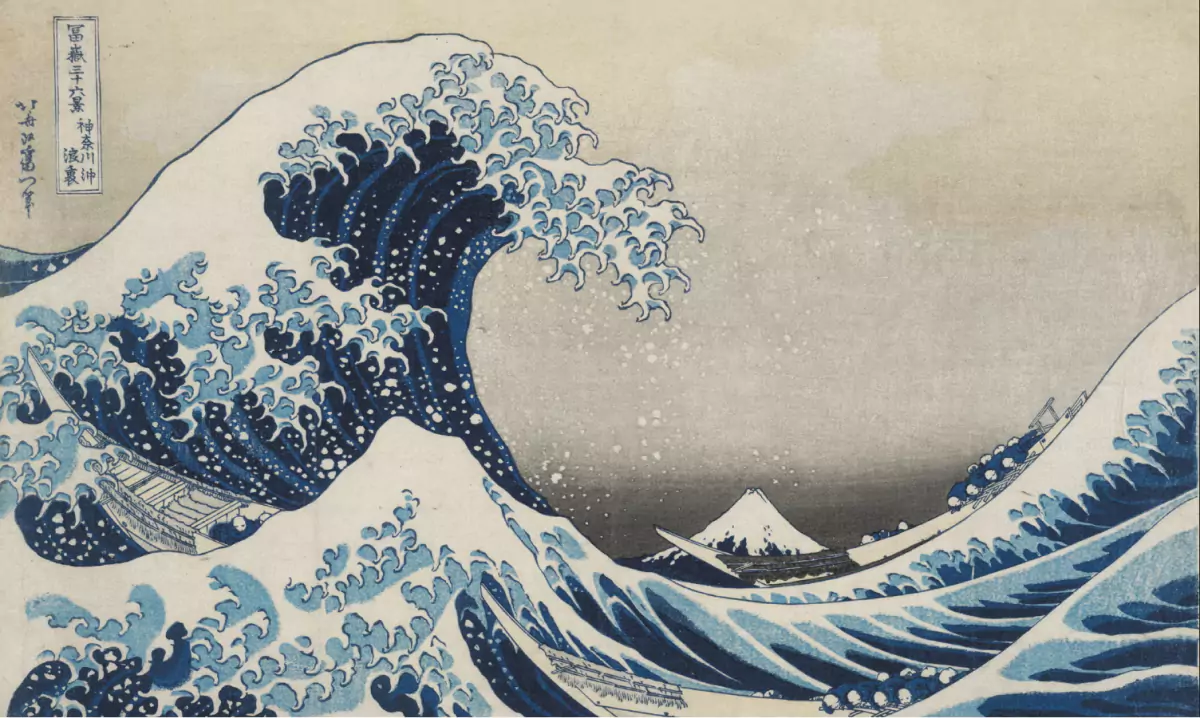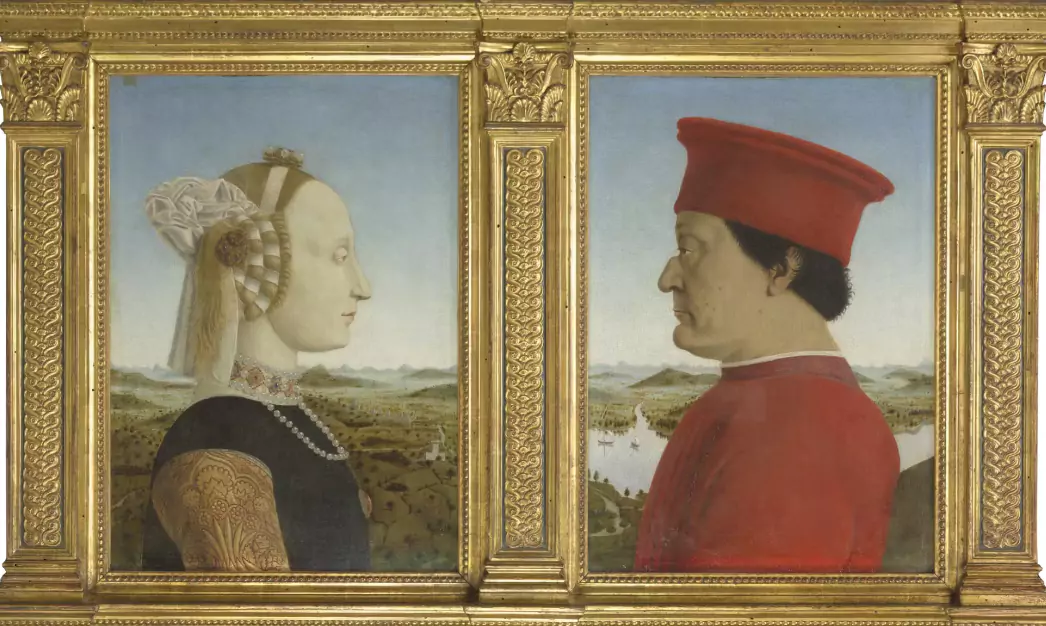A huge wave is about to engulf people sailing in fragile fishing boats. It seems that the confrontation between man and nature will lead to disaster.
But only if we look at the painting from a European perspective—from left to right. Yet the artist gave us a choice. He combined techniques from European and Japanese art in his works. Therefore, the painting can also be read from right to left, following the Eastern tradition.
And then it becomes apparent that the boats are preparing to overcome the wave and triumph over the elements. It all depends on which side you look from. Katsushika Hokusai didn’t just paint a mesmerizing landscape. He filled the print with profound philosophical meanings.

In his painting, man is not a victim but a symbol of nature’s impermanence. The crest of the great wave resembles a dragon’s claw, symbolizing the power of the elements. Mount Fuji symbolizes stability: no matter what passions boil at its foot, it will stand forever. The shape of one of the waves repeats the outlines of Fuji, and the multitude of small waves are exact copies of the big one. Thus, Hokusai says that the world is one and everything in it is interconnected.

The Great Wave off Kanagawa : Facts
- The great Wave off Kanagawa is part of a series of Ukiyo-e prints titled Thirty-six views of Mount Fuji, which Hokusai made between 1830 and 1833. It is a polychrome (multi-colored) woodblock print, made of ink and color on paper that is approximately 25,4 x 35,56 cm (10 x 14 inches).
- All of the images in the series feature a glimpse of the mountain, but as you can see from this example, Mount Fuji does not always dominate the frame.
- Mount Fuji is the highest mountain in Japan and has long been considered sacred. Hokusai is often described as having a personal fascination with the mountain, which sparked his interest in making this series.
- However, he was also responding to a boom in domestic travel and the corresponding market for images of Mount Fuji. Japanese woodblock prints were often purchased as souvenirs. Initially, thousands of copies of this print were quickly produced and sold cheaply.
- Hokusai departed from traditional ukiyo-e subjects like courtesans and actors, instead portraying daily life in Japan, such as fishermen in “The Great Wave.” This change of subject matter was a breakthrough in both ukiyo-e prints and in Hokusai’s career.
Influence on Western culture
Moreover, we can partly thank the Japanese artist for the paintings of Claude Monet, Édouard Manet, Edgar Degas, and Vincent van Gogh. They bought Hokusai’s works and borrowed elements from Eastern painting traditions. For example, compositional solutions, bright clean color spots, figures with edges trimmed like paper. The influence of Japanese art on Western culture became known as Japonisme.
Vincent van Gogh, a great admirer of Hokusai, praised the quality of drawing and use of line in The Great Wave off Kanagawa, and wrote it had a “terrifying” emotional impact.

Hokusai himself also adopted some European techniques, including perspective. Perspective, which was first used in Western paintings by 15th-century artists Paolo Uccello and Piero della Francesca, was introduced to Japanese artists through Western – particularly Dutch – merchants arriving in Nagasaki.
The Great Wave off Kanagawa would not have been as successful in the West if audiences did not have a sense of familiarity with the work. It has been interpreted as a Western play seen through the eyes of a Japanese.
This cross-cultural exchange highlights the universal appeal and relevance of Hokusai’s art, transcending geographical and cultural boundaries.
Irina Ivanova, Art columnist @ArtAddict



